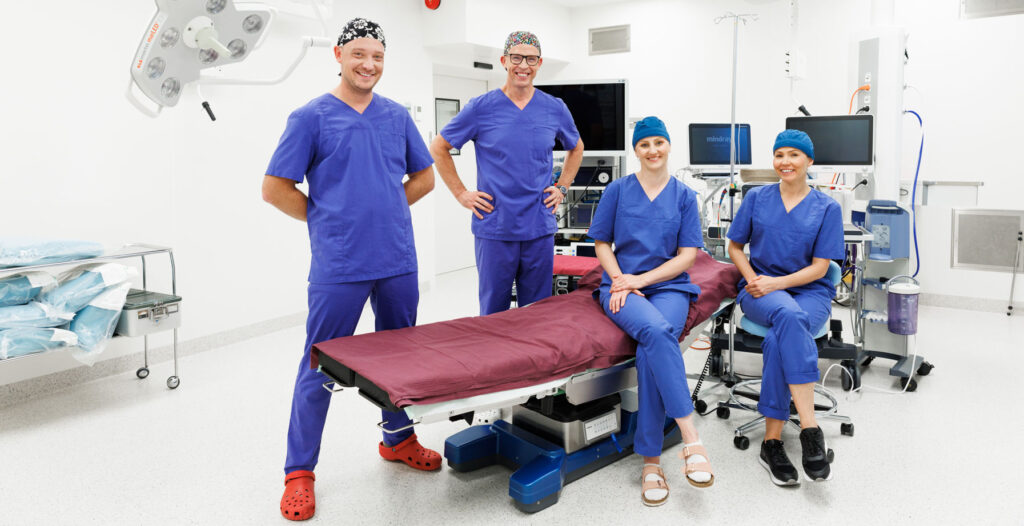Gallbladder removal or laparoscopic cholecystectomy
Cholelithiasis is a disease characterized by the formation of gallstones in the gallbladder or bile ducts. As a result of a change in the composition of bile or a disorder of bile drainage, substances dissolved in bile such as cholesterol and bilirubin are deposited in the gallbladder, forming stones. Gallstones can cause pain and lead to various related diseases.
Risk factors for the formation of gallstones are:
- female gender,
- overweight and rapid weight loss,
- pregnancy,
- high fat diet,
- low fluid intake.
Gallstones can cause pain in the upper abdomen (biliary colic), acute or chronic inflammation of the gallbladder (cholecystitis), acute inflammation of the bile ducts (cholangitis) or inflammation of the pancreas (pancreatitis).
Typical complaints of gallstones are discomfort or pain in the right upper abdomen after eating, feeling of fullness, nausea or vomiting. Complaints usually occur after eating fatty foods.
Laparoscopic cholecystectomy
If gallstones cause discomfort or pain, it is recommended to remove the gallbladder together with the stones. The operation is always performed under general anesthesia. Through four small incisions, a video camera and instruments are introduced into the abdominal cavity. The gallbladder containing the stones is separated from the liver bed and taken out of the abdominal cavity. Wounds are closed with intradermal absorbable sutures. Recovery from laparoscopic surgery is usually fast, and patients can go home on the same day.
Frequently Asked Questions
If the gallbladder is left, stones and complaints will reappear.
Stones that have already formed cannot be dissolved with drugs, and the evidence based treatment guidelines do not recommend it.
The gallbladder collects bile and releases it into the duodenum when eating. Bile dissolves fat droplets and helps their digestion. Bile is produced in the liver, the gallbladder does not produce it.
The gallbladder is important, but not an essential organ for life. After surgery, bile flows directly from the liver into the intestine. To avoid indigestion, it is recommended to eat foods with a low fat content and high fiber content in the first weeks after the surgery.
70-80% of gallstones are asymptomatic, i.e. they do not cause complaints and do not require surgical intervention. For incidentally discovered stones, the probability of developing symptoms is 1-2% per year.
